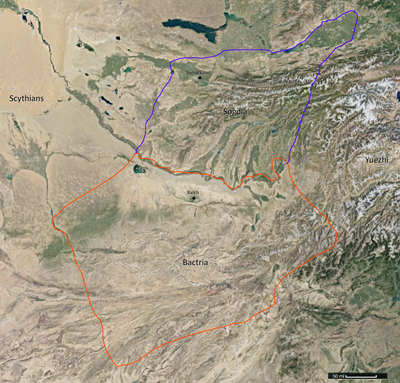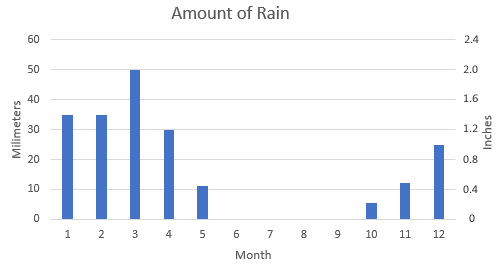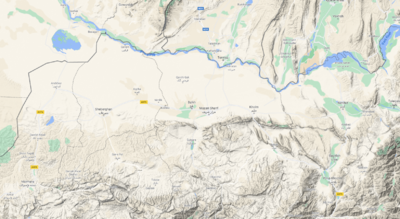Greco-Bactria:Features
Jump to navigation
Jump to search
| Greco-Bactria | |||||
| Features | Assets | Timeline | Plan | Notes | Ideas |
Bactria
- Bactria is essentially a large east-west valley, situated between the Fann mountains to the north and the Hindu Kush mountains to the south.
- More precisely Bactria is bordered by the river Oxus in the north, which is just to the south of the Fann mountains.
- Arguably sections of the Hindu Kush mountains to the South are also part of Bactria, but other than containing horse nomads (who were insurgent during Alexander's time) it was not of interest.
- The land of Bactria is of three types, layered as east-west strips on top of each, starting from the south:
- Rolling hills (and the Hindu Kush mountains south of that)
- Alluvial plains (with annual flooding) that produce abundant crops
- Desert (with occasional oases) just south of the river Oxus
- Sometimes Bactria refers to just this valley, other times it refers to the area that also includes the Hindu Kush mountains (such as at the time of Alexander's death), and other teams it includes both Bactria and Sogdia.
- Around BC 250 Bactria is said to have 1000 cities (somewhat of an exaggeration...)
- "Diodotus, the governor of the thousand cities of Bactria (Latin: Theodotus, mille urbium Bactrianarum praefectus)".
- Temperature:
- In the valley, for example around the capital city of Bactria, the temperature ranges from 32 F to 98 F (0 C to 36 C).
- It can have extreme temperatures as low as -22 C, and hence would be in Hardiness Zone 6 in the USDA scale.
- Precipitation:
- There is no precipitation at all for several months, and then it averages about 30 mm from January to April (which is still not much!).
- In total there is about 176 mm of rain per year.
- The climate is considered to be cold semi-arid steppe, "BSk" classification.
- In other words it evaporates more water than it rains.
- Notice the near total lack of vegetation, especially in the southern mountains.
- Topographic Map: https://www.google.com/maps/place/Balkh,+Afghanistan/@36.5825708,66.9330108,13.5z/data=!4m5!3m4!1s0x38cb52c3b19e9359:0x79479ff9f1496592!8m2!3d36.8909158!4d67.1894488!5m1!1e4
Sogdia (or Sogdiana)
- Sogdia (acquired 5 years later when Alexander dies) is ... TBD



